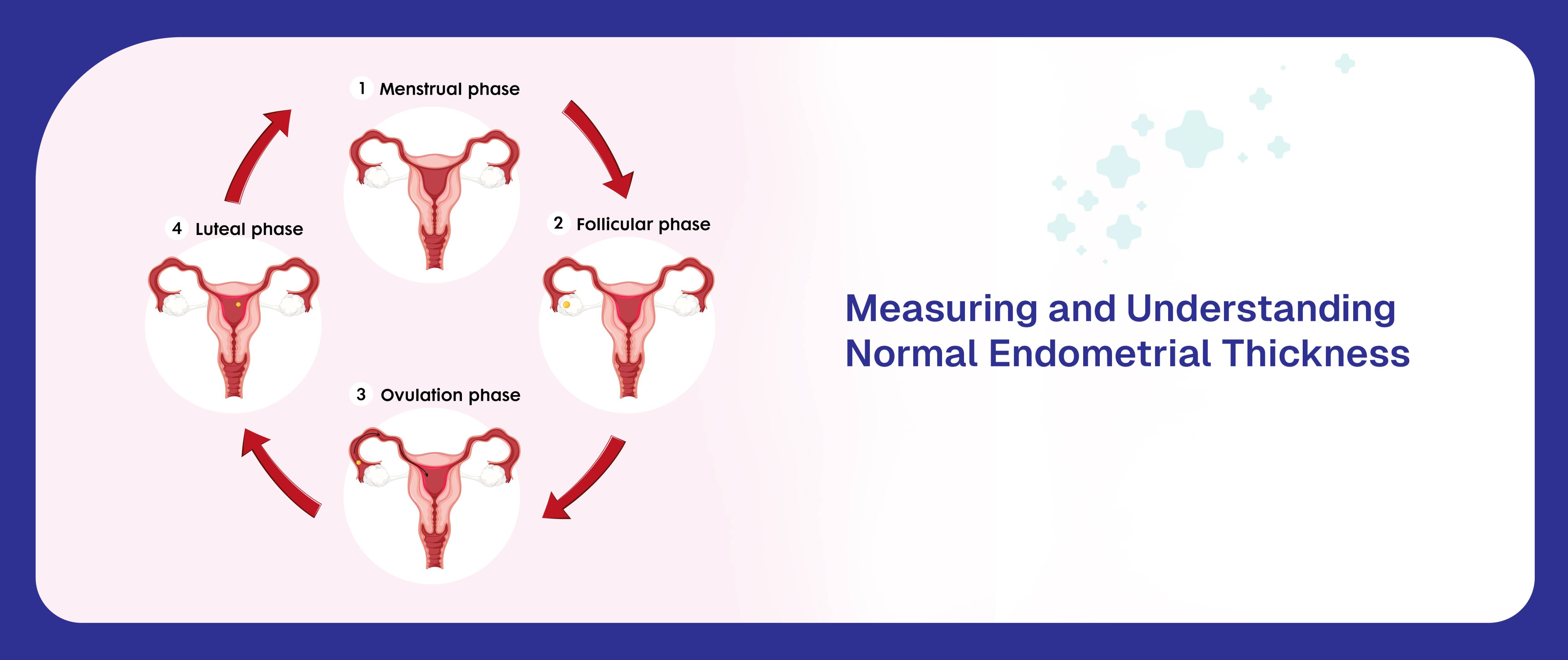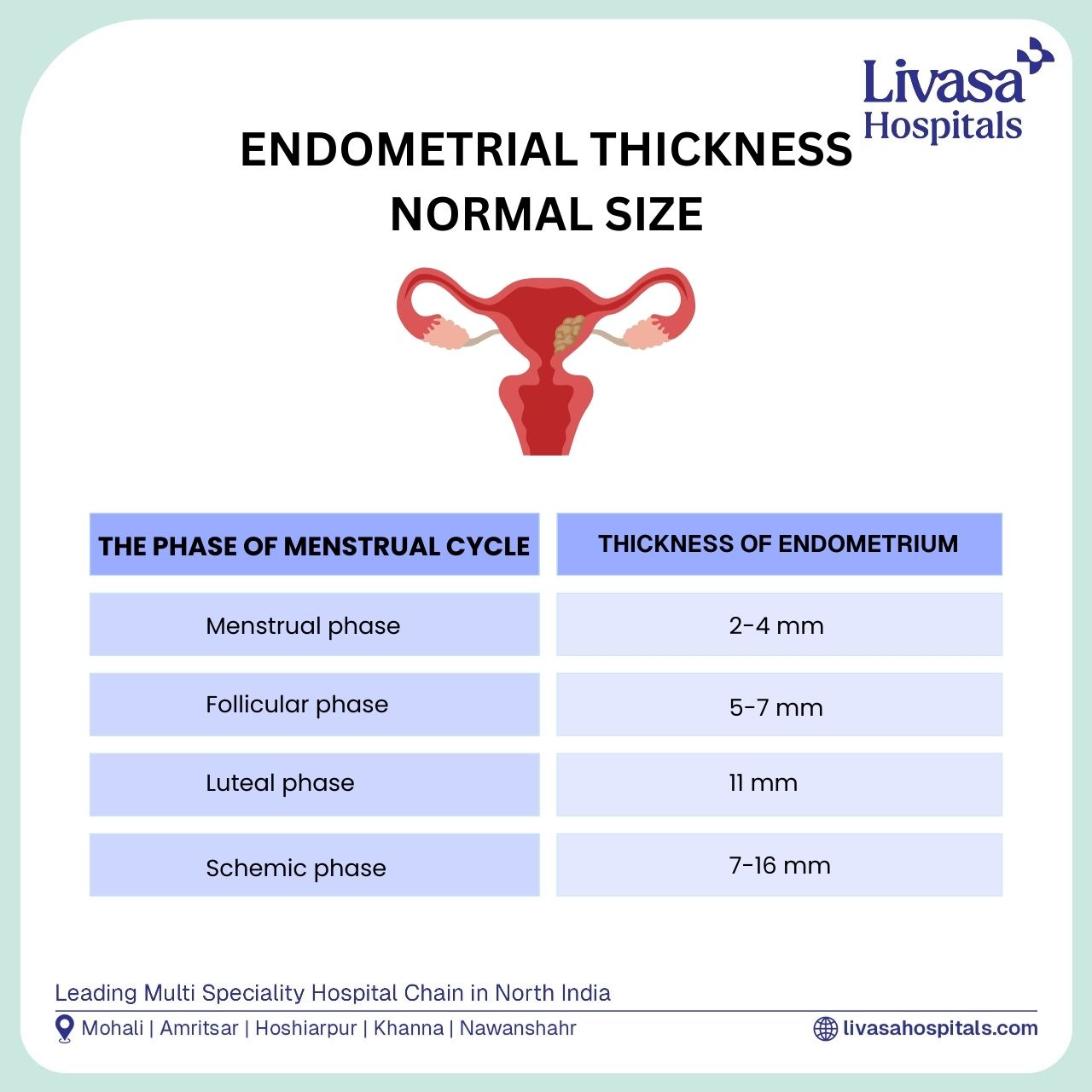17 Nov 2025
Cognitive Rehabilitation & Brain Training Programs Amritsar


30 Jan 2025
Call +91 80788 80788 to request an appointment.
Normal Endometrial Thickness: What It Means for Women’s Reproductive Health
The endometrium, the inner lining of the uterus, plays a vital role in fertility and the menstrual cycle. Measuring normal endometrial thickness is essential for assessing reproductive health, determining uterine readiness for embryo implantation, and diagnosing potential gynecological issues. In this guide, we explain what normal endometrial thickness is, how it changes throughout the menstrual cycle, its significance, and when to seek medical advice.
Endometrial thickness refers to the measurement of the uterine lining, typically evaluated using transvaginal ultrasound. This measurement helps doctors understand whether the endometrium is at the optimal thickness to support fertilization and pregnancy. A healthy endometrium is key for a fertilized egg to implant successfully.
The thickness of the endometrium changes dynamically due to hormonal influences throughout the menstrual cycle:
Follicular Phase: At menstruation start, the endometrium is thin, usually between 2 and 4 millimeters. It thickens gradually under rising estrogen levels, reaching approximately 5 to 8 millimeters by the end of this phase.
Ovulation: Around mid-cycle ovulation, the endometrium reaches its peak thickness, typically between 7 and 14 millimeters, considered ideal for implantation.
Luteal Phase: After ovulation, progesterone supports maintaining a thickened endometrium, generally above 7 millimeters, to prepare for pregnancy. If fertilization does not occur, the lining sheds during menstruation.
Follicular phase: 2–4 mm initially, thickening to 5–8 mm.
Ovulation phase: Optimal thickness ranges between 7–14 mm.
Luteal phase: Thickness of 7–14 mm supports implantation.
Postmenopausal women: Usually less than 5 mm if not on hormone replacement therapy (HRT). Those on HRT may have a thicker lining due to the hormonal effects.

Thin endometrium: Less than 7 mm can cause implantation difficulty. This may result from conditions like PCOS, hormonal imbalances, or uterine scarring. Medical treatments and assisted reproductive technologies (such as IVF) can help enhance lining thickness.
Thick endometrium: An overly thick lining may signal excess estrogen, endometrial hyperplasia, polyps, or fibroids. Symptoms often include heavy or irregular bleeding and may increase cancer risk, requiring further medical evaluation or biopsy.
Transvaginal ultrasound is the standard, non-invasive method to measure endometrial thickness. A small probe inserted vaginally captures detailed images, allowing doctors to measure the distance from the inner to outer borders of the endometrial lining accurately.
If you experience irregular periods, unexplained bleeding, or challenges with fertility, measuring your endometrial thickness can offer valuable insights into your uterine health. Early consultation with a healthcare professional is important for diagnosis and treatment of any abnormalities.
Understanding normal endometrial thickness is crucial for evaluating reproductive health and fertility potential. By tracking how this lining changes during the menstrual cycle, doctors can better diagnose issues and tailor treatments. Regular medical check-ups and appropriate lifestyle habits support uterine health and improve chances of a successful pregnancy.
Neurotropic Virus Infections: West Nile, Zika, Japanese Encephalitis Amritsar
+91 80788 80788
Livasa Healthcare Group Corporate Office,Phase-8, Industrial Area, Sector 73, Sahibzada Ajit Singh Nagar, Punjab 160071
livasacare@livasahospitals.in
| Mohali | +91-99888 23456 |
| Amritsar | +91-99887 49494 |
| Hoshiarpur | +91-99883 35353 |
| Nawanshahr | +91-75081 82337 |
| Khanna | +91-98888 05394 |